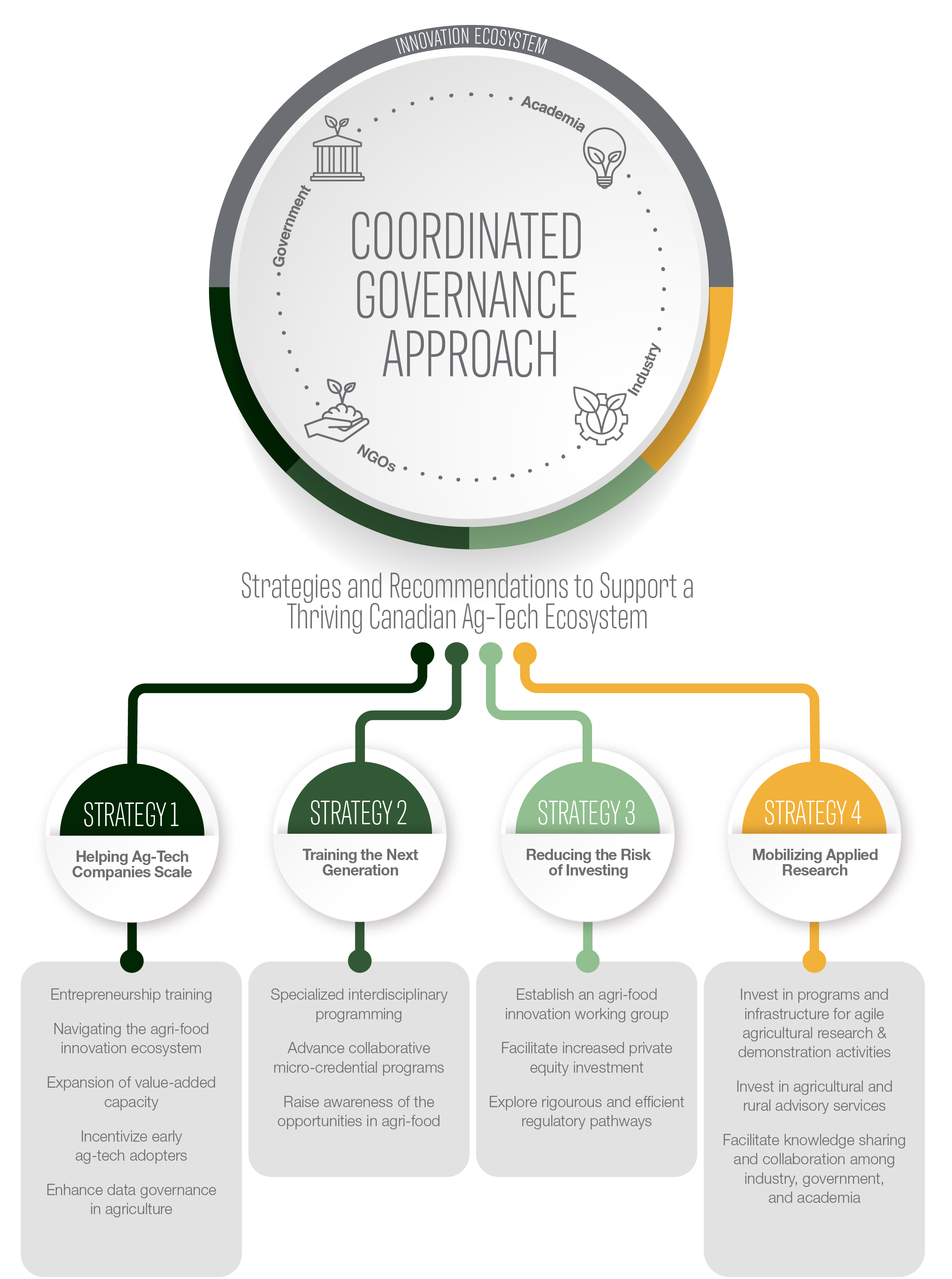Feeding the Future with Canadian Technology
Unlocking Canada’s Ag-Tech Potential
Innovations in agriculture and food technology can help to reduce greenhouse gas emissions, sequester carbon, manage labour force shortages, and increase productivity. Canada is well positioned to become a global leader in the development and mobilization of these technologies – a path that could unlock $30 billion in economic opportunity for our country, help to solve the 100,000 job vacancies anticipated by 2030, protect our food system from climate-related shocks, and help Canada meet our climate emissions targets.
“This report… provides a stark reminder of both the opportunity and the urgent need for Canada to realize its potential as an agri-food superpower.”
– Dominic Barton
Canada has many advantages when it comes to our agriculture and food system: a strong community of innovative farmers, a vibrant ecosystem of research and development, abundant land and water resources, a trusted global reputation, and an innovative workforce. However, we currently lag other countries in support for agricultural technologies, and in their development and commercialization. The sector can and will help Canada improve both our sustainability and productivity – but it will take concerted investment and collaboration between government, academia, industry and investors.
Final Report – September 2024
Feeding the Future with Canadian Technology
Throughout 2023-24, we spoke with people across the country – and looked at what other countries are doing – to develop a report with a series of recommendations on how Canada can become the world’s top supplier of agricultural technologies. Access the final report now to read about what we’ve learned, and discover key strategies for driving innovation, investment, and global leadership in Canada’s agricultural sector.
Continue scrolling this webpage to find our key recommendations by sector: Government, Academia, Producers, Investors, and Innovation Ecosystem Partners.
Strengthening Canada’s Food Future With AgTech
Innovations in agriculture and food technology can help to drive prosperity for Canadians – addressing a workforce shortage, producing more food with less environmental impact, and reducing food waste. However, we need leadership, investment, top talent, and knowledge exchange to help Canada build on our strengths in agri-food and realize the potential $30 billion in growth for our economy that is at stake.
A Coordinated Governance Approach
Strategies and Recommendations to Support a Thriving Ag-Tech Ecosystem


Investment in agriculture and food technology will benefit Canada’s environment, economy and society – but we need to act now to take advantage of this opportunity. We propose four key strategies that Canada can use to realize the full benefits of agriculture and food technology and innovation. Click through the buttons below to read more about these strategies.
Opportunities to learn and improve
International Case Studies
Click to read the following case studies to learn more about how other countries are fostering innovation and technology within agriculture.
What can you do to advance agriculture and food technology development?
We have organized our key recommendations by sector. Click through to view sector specific breakdowns of our recommendations.
Collaborating with partners
Meet Our Team
This report was completed due to the valuable contributions of our Co-Chairs, Research Team, and Advisory Committee. With special thanks to the Knowledge Mobilization and Communications Teams at Arrell Food Institute, interview subjects, and those who shared their knowledge and insights.
Co-Chairs
Advisory Committee
Project Management
Research Team


What We’re Reading
-
Food Innovation in Canada Report
-
Why Is Canada Falling Behind In Agriculture And Food Production?
-
Climate Action 2024
-
Data as a Foundation for Sustainable Productivity
-
The Next Frontier in Canada’s Agri-Food Sector: Technology Driven Labour and Skills Transitions
-
Remote Controlled: The Impacts of Distruptive Technologies in the Ontario Agriculture Sector
-
Crunching the Numbers: A Snapshot of Canada’s Agriculture Technology Landscape